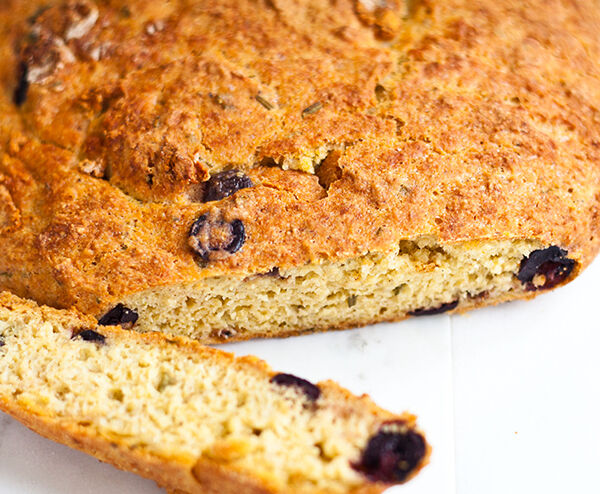-
In a large, wide bowl, mix together the flours, the psyllium husk, and the water.
-
Stir them together with a rubber spatula. Finish mixing them with your hands. This will be a wet, squishy batter.
-
Set aside the bowl for 30 minutes to allow the flours to fully hydrate.
-
Sprinkle the yeast, salt, and sugar over the top of the dough. Add the eggs and olive oil.
-
Stir the dough together with a rubber spatula, making sure the eggs are fully incorporated into the dough. (If you don't mind the messiness, the best way to mix this dough is by hand.)
-
Toss in the olives and rosemary and fold them into the dough, which will be wet.
-
Move the bread dough into a greased bowl. Cover the bowl with plastic wrap and set it aside in a warm place in the kitchen.
-
Let the dough rise until it has doubled in volume; this will take at least 1 to 2 hours.
-
Put a lidded cast-iron Dutch oven into the oven. Heat the oven to 475° F.
-
When the oven has come up to temperature, set the timer for 30 minutes and allow the oven and pot to grow truly hot.
-
After its rise, the dough will be firmer than before but still wet and tacky to the touch. Do not expect it to look like traditional bread dough.
-
When the timer goes off, remove the Dutch oven from the oven. Carefully, remove the lid.
-
Using a rubber spatula, if necessary, plop the bread dough into the hot Dutch oven. It will start steaming right away.
-
Replace the lid and put the Dutch oven back into the oven. Bake for 30 minutes.
-
Remove the lid and continue baking until the crust is a deep brown, about 20 to 30 minutes.
-
Remove the bread from the oven. After 10 minutes, move the bread to a cooling rack, taking care as the Dutch oven will still be hot.
-
When the bread has cooled, slice it or tear off hunks of it. This bread is best dipped in olive oil.



